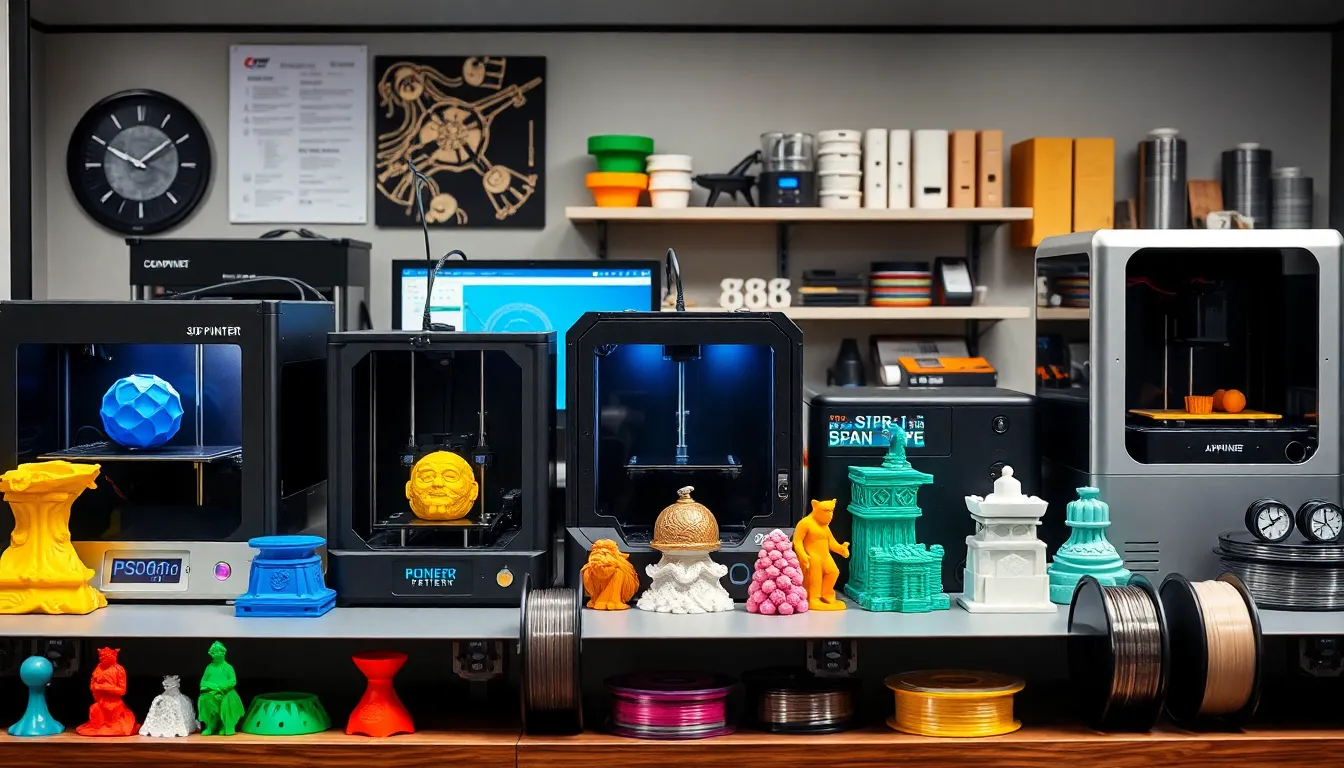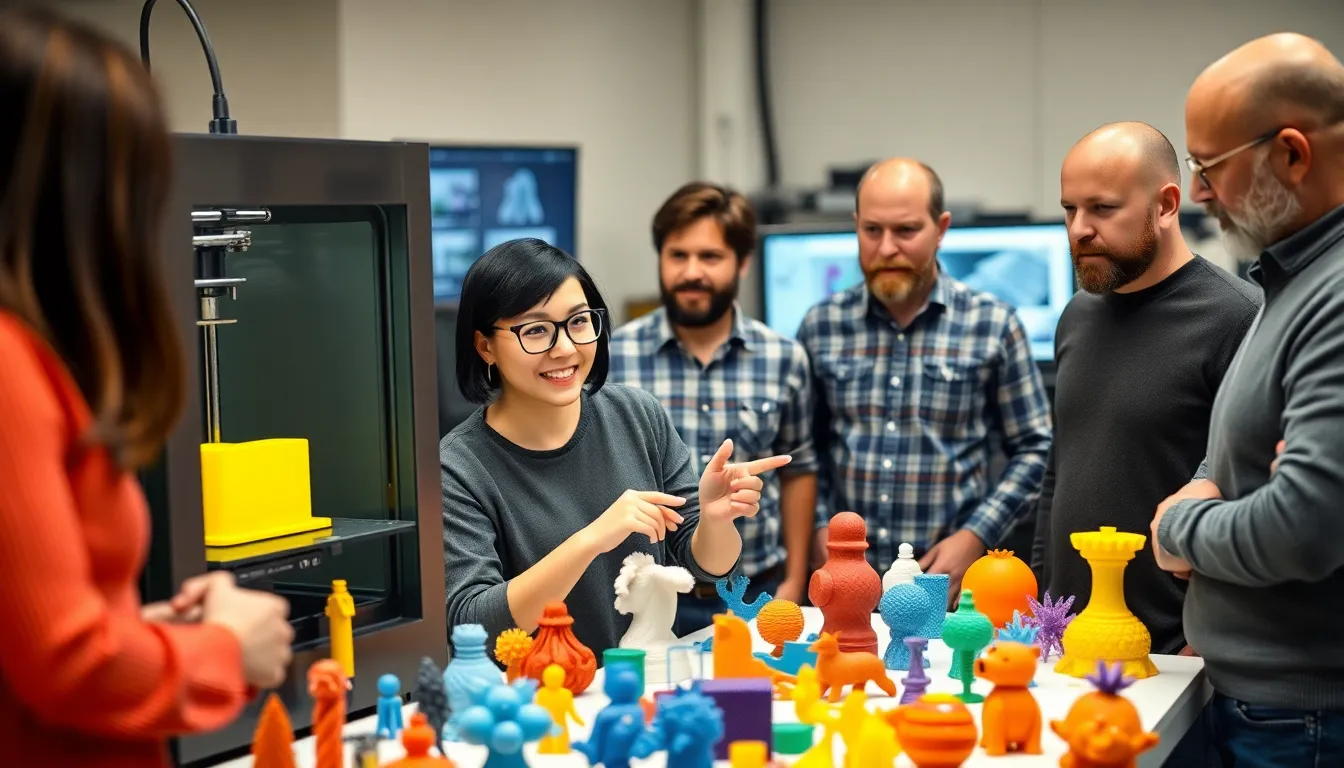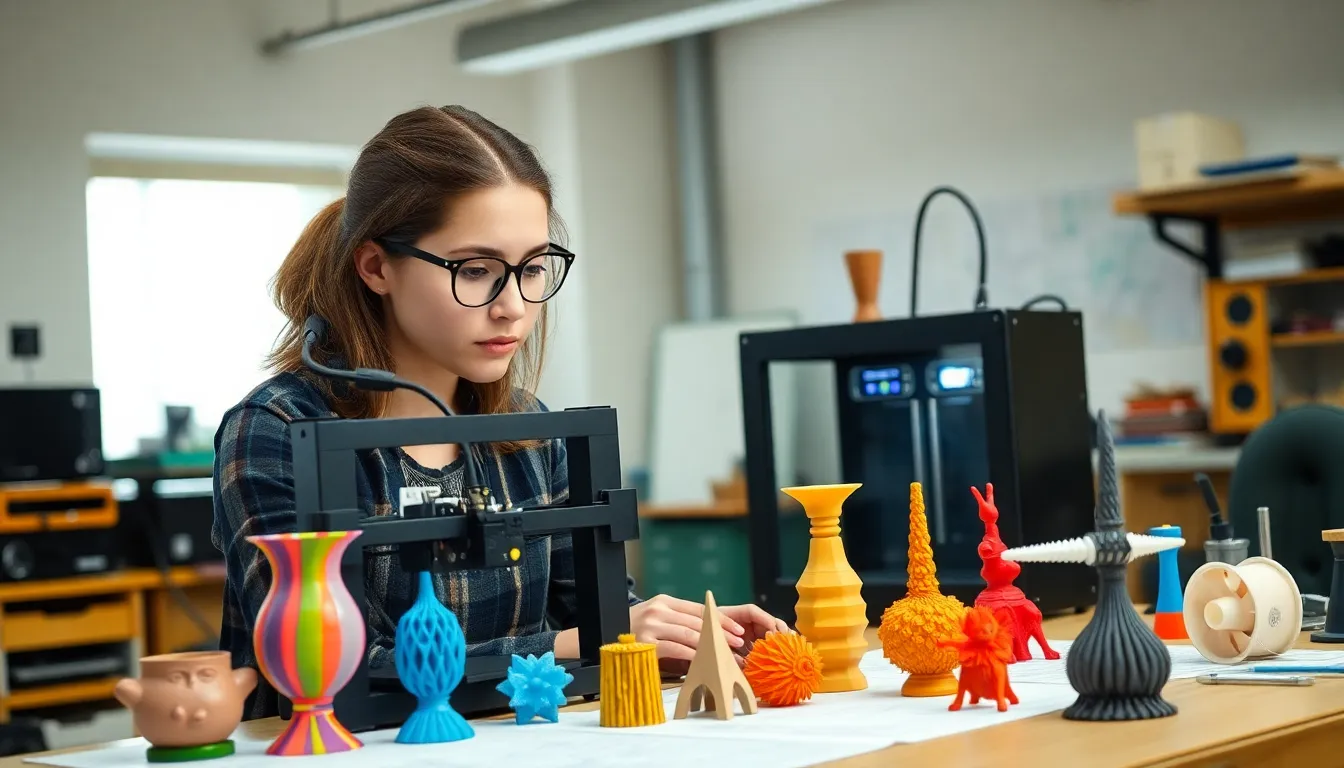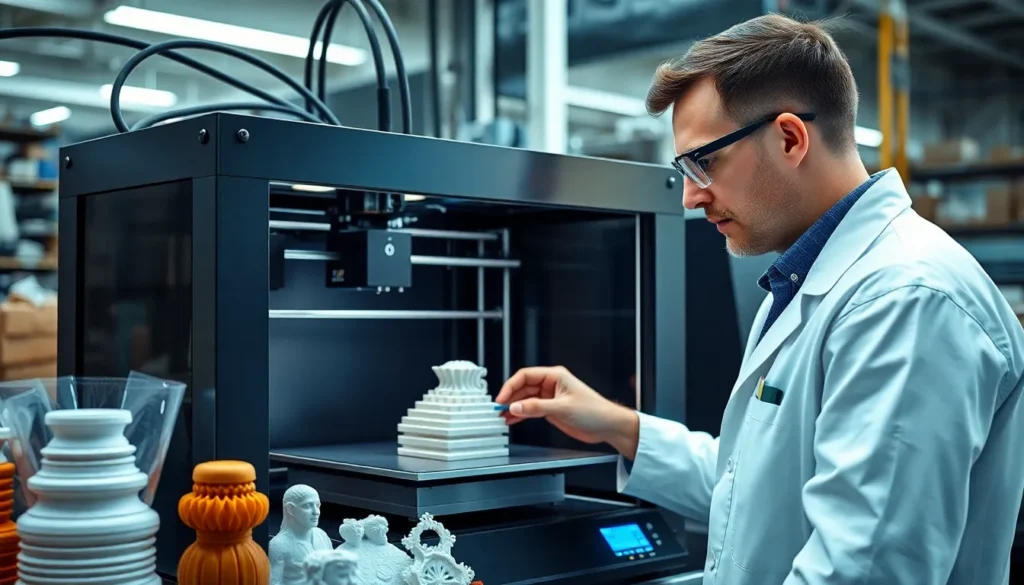In recent years, 3D printing has transformed from a niche technology into a vital component of modern manufacturing and design. As it continues to evolve, the concept of a 3D printing network emerges as a game changer, connecting creators, businesses, and enthusiasts worldwide. This interconnected ecosystem enhances collaboration and innovation, allowing users to share ideas, resources, and expertise.
By harnessing the power of a 3D printing network, individuals can access a vast array of printers, materials, and designs. This not only streamlines the production process but also democratizes access to advanced manufacturing techniques. As the network grows, so does the potential for creativity and efficiency, paving the way for exciting developments in various industries.
Overview of 3D Printing Networks
3D printing networks serve as interconnected platforms where creators and businesses exchange ideas, designs, and resources related to additive manufacturing. These networks simplify access to diverse printers, materials, and design files, facilitating streamlined production processes.
Key components of 3D printing networks include:
- Collaboration: Users share their expertise and experiences, enabling faster problem-solving and innovation.
- Resource Access: Participants benefit from an extensive library of digital designs and materials, promoting experimentation and development.
- Marketplaces: Many networks feature marketplaces where users can buy or sell 3D models, equipment, and services, fostering economic opportunities.
- Community Engagement: Networking platforms host forums and discussions, allowing users to connect and learn from each other.
3D printing networks also play a vital role in education and training. They provide learning resources and support to newcomers in the 3D printing field, enhancing skills and knowledge.
As the technology evolves, the functionality of 3D printing networks expands, integrating advanced features like compatibility with artificial intelligence and machine learning. These developments enhance the design and manufacturing processes, driving continuous innovation in various sectors.
Key Components of a 3D Printing Network

A 3D printing network relies on several essential components that enable effective collaboration and production. Understanding hardware and software requirements forms the foundation for successful integration within this network.
Hardware Requirements
- 3D Printers: Various types of 3D printers, such as Fused Deposition Modeling (FDM), Stereolithography (SLA), and Selective Laser Sintering (SLS), provide different capabilities and material options. Each printer type serves specific applications, impacting the quality and complexity of printed objects.
- Materials: A diverse range of materials, including thermoplastics, metals, ceramics, and resins, are crucial. Selecting appropriate materials affects mechanical properties, surface finish, and overall performance of printed parts.
- Supporting Equipment: Additional equipment, such as post-processing tools, scanners, and maintenance hardware, enhances the printing workflow and quality. Proper maintenance of these components ensures optimal printer performance.
Software Solutions
- Slicer Software: Slicer software converts digital 3D models into print instructions. This software determines layer height, speed, and fill density, influencing print quality and material efficiency.
- Design Software: Computer-Aided Design (CAD) software allows users to create or modify 3D models. Popular programs include SolidWorks, AutoCAD, and Tinkercad, providing varying levels of complexity and usability.
- Collaboration Platforms: Online platforms facilitate sharing and collaboration on designs, models, and projects. Tools like GrabCAD and Thingiverse enable users to access a community library of designs and engage with fellow creators.
Benefits of a 3D Printing Network
A 3D printing network offers numerous advantages that improve collaboration and reduce costs in manufacturing and design. These benefits enhance creativity and streamline production processes.
Enhanced Collaboration
Enhanced collaboration forms the backbone of a 3D printing network. Users from diverse backgrounds can easily share ideas, designs, and best practices. Networking platforms enable joint projects and facilitate feedback, accelerating the development of innovative products. Access to a global talent pool allows creatives to partner with experts across various fields, driving cross-disciplinary advancements. Furthermore, real-time communication tools create an efficient environment for discussing technical issues and seeking solutions.
Cost Efficiency
Cost efficiency becomes a significant advantage through a 3D printing network. Sharing resources and facilities among users reduces individual capital investments in expensive equipment. Businesses access a library of designs, often lowering the necessity for custom model development. Additionally, local production minimizes shipping costs and lead times, allowing for rapid prototyping and iteration. The ability to source materials directly from manufacturers reduces material costs, contributing further to overall savings.
Challenges in 3D Printing Networks
3D printing networks face several challenges that can impact their effectiveness and adoption. Key obstacles include technical limitations and security concerns, both of which require attention for successful implementation.
Technical Limitations
Technical limitations hinder the full potential of 3D printing networks. Compatibility issues arise from diverse printer models and varying material requirements, complicating standardization. Limited build sizes restrict the scope of projects, preventing the production of larger objects in a single print. Print quality inconsistencies also surface depending on the technology used; for instance, some methods yield smoother finishes than others. Material constraints exist as well; not all printers can handle advanced materials, which limits application in certain industries. Additionally, the need for precision in designs often means that intricate models require more advanced equipment, further segmenting user capabilities.
Security Concerns
Security concerns pose significant risks within 3D printing networks. Intellectual property theft can occur easily when users share designs without proper protections, leading to unauthorized replication of products. Data breaches represent another threat, as sensitive information can become vulnerable during digital exchanges. Additionally, malware can infect devices through compromised files, resulting in damaged printers or production downtime. Ensuring secure file sharing protocols and employing robust cybersecurity measures are essential to mitigate these risks, fostering a safer environment for creators and businesses.
Future Trends in 3D Printing Networks
Future trends in 3D printing networks indicate significant advancements in technology and connectivity. Increased adoption of decentralized networks enhances collaboration and diversifies resources among users. Blockchain technology offers secure transactions and ownership verification, ensuring creators’ intellectual property rights are protected.
Integration of artificial intelligence (AI) into 3D printing networks streamlines workflows. AI can optimize designs, predict maintenance needs, and improve quality control, resulting in enhanced efficiency. Machine learning algorithms can analyze user data to suggest better materials and printing techniques.
Sustainability emerges as a crucial focus within 3D printing networks. Companies are shifting towards biodegradable materials and recycling printed objects, reducing waste. Initiatives promote a circular economy by encouraging users to return or repurpose their printed items.
Expanded cloud-based solutions are revolutionizing how users access resources. Cloud platforms enable remote monitoring and control of printers, providing flexibility and convenience. Users can collaborate in real-time, sharing designs and feedback instantaneously from any location.
Education and training within 3D printing networks are evolving to include virtual reality (VR) and augmented reality (AR). These technologies enhance learning experiences by providing immersive simulations, allowing users to visualize complex designs and processes interactively.
Emerging marketplaces for 3D printed goods are transforming e-commerce. Specialized platforms cater to niche markets, enabling small businesses and individuals to reach global customers. These marketplaces facilitate the buying and selling of both 3D models and printed objects, promoting entrepreneurship.
Scalability and customization of printing solutions will expand. 3D printing networks will allow users to produce customized products at scale, catering to evolving consumer needs. This flexibility enhances businesses’ ability to respond to market demands quickly.
Overall, these trends position 3D printing networks at the forefront of innovation in manufacturing and design. Continued advancements promise to redefine production methods, enhance creativity, and drive economic growth across various industries.
The rise of 3D printing networks signifies a transformative shift in the manufacturing landscape. By connecting creators and businesses globally, these networks foster collaboration and innovation that drive efficiency and creativity. As technology advances, the integration of features like artificial intelligence and blockchain will further enhance the capabilities of these networks.
Challenges such as technical limitations and security concerns remain, but ongoing developments promise to address these issues. With a focus on sustainability and improved educational resources, 3D printing networks are poised to redefine production methods and contribute to economic growth. The future looks bright as these networks continue to evolve, making advanced manufacturing accessible to all.













